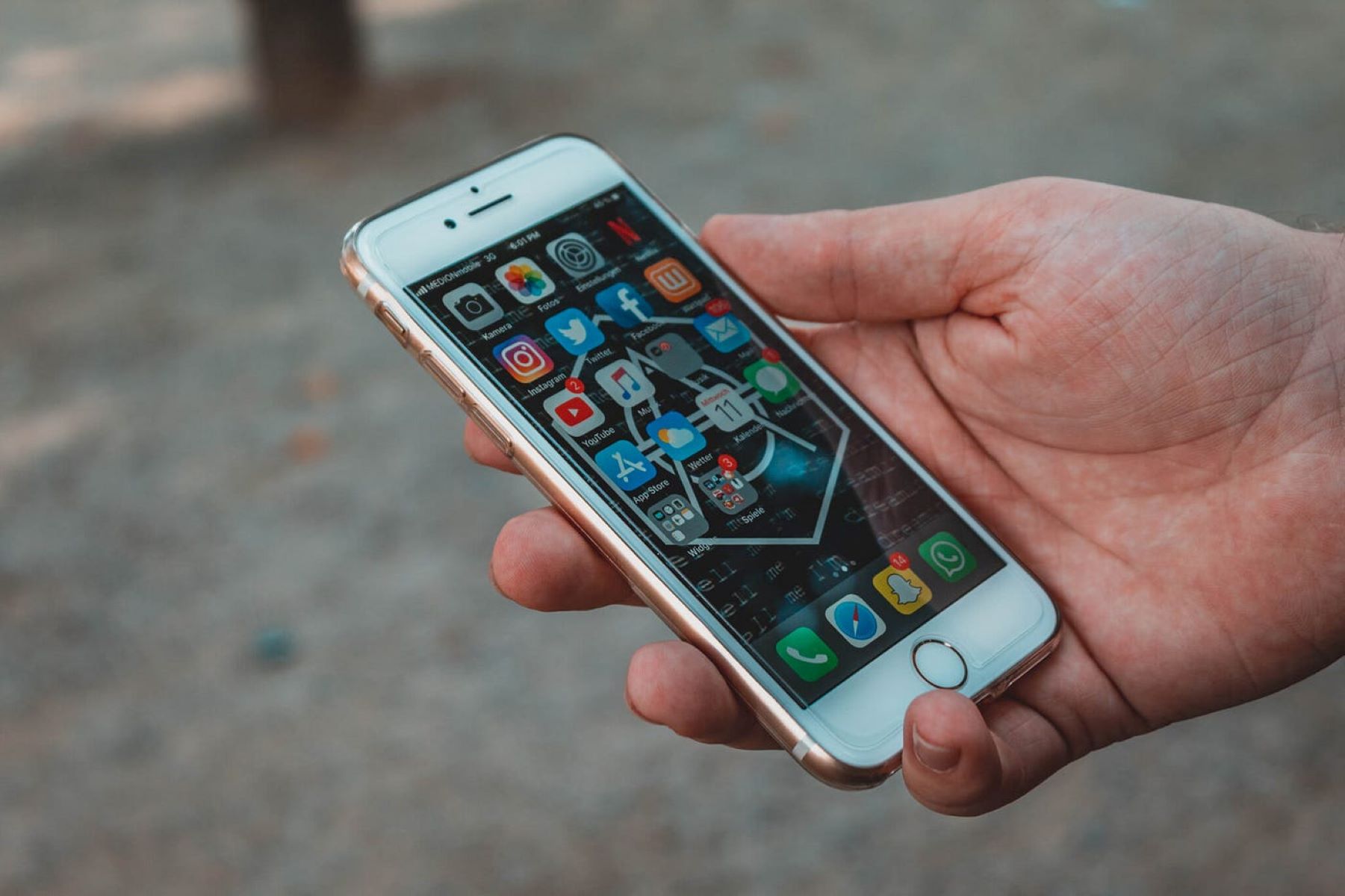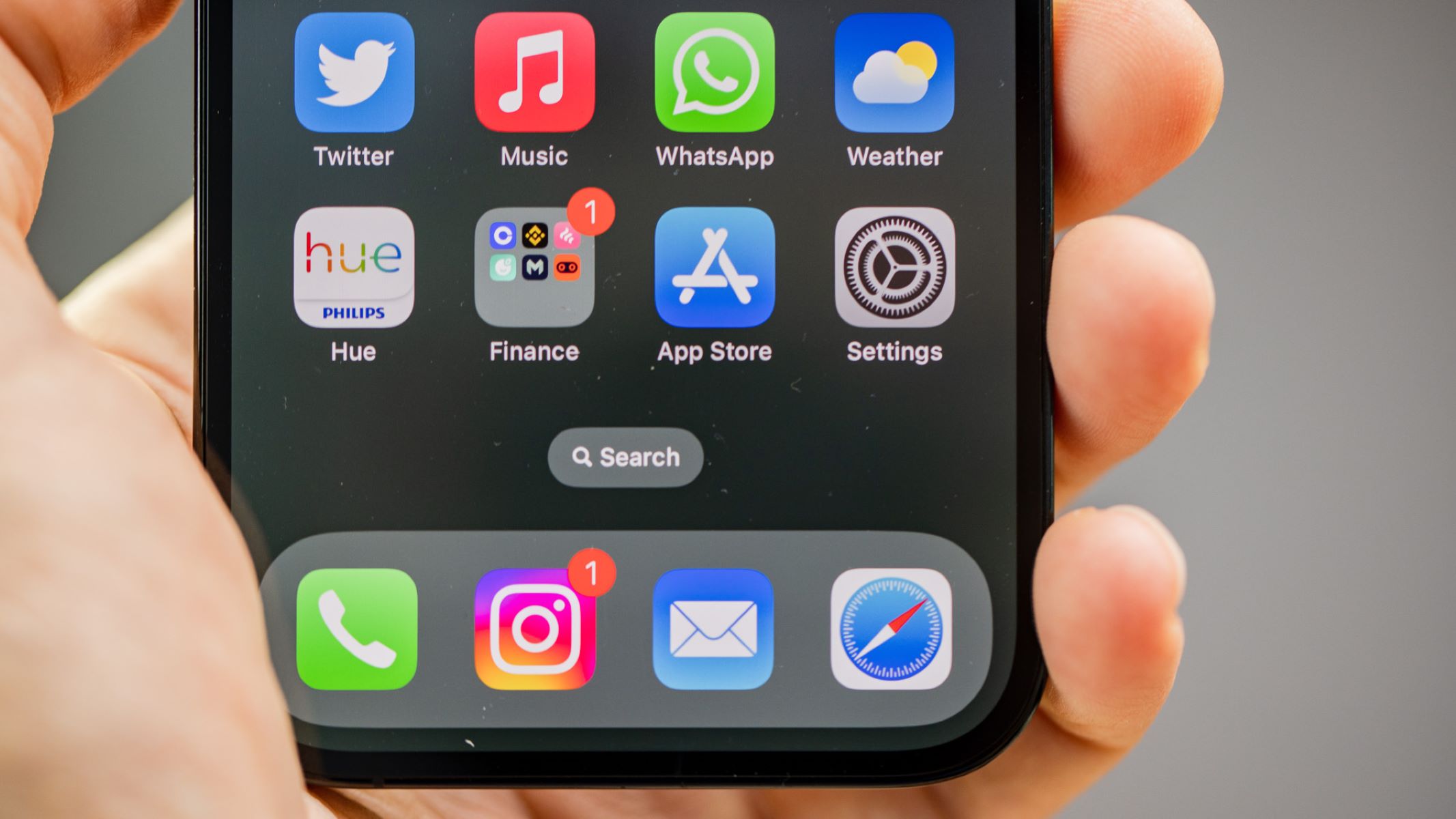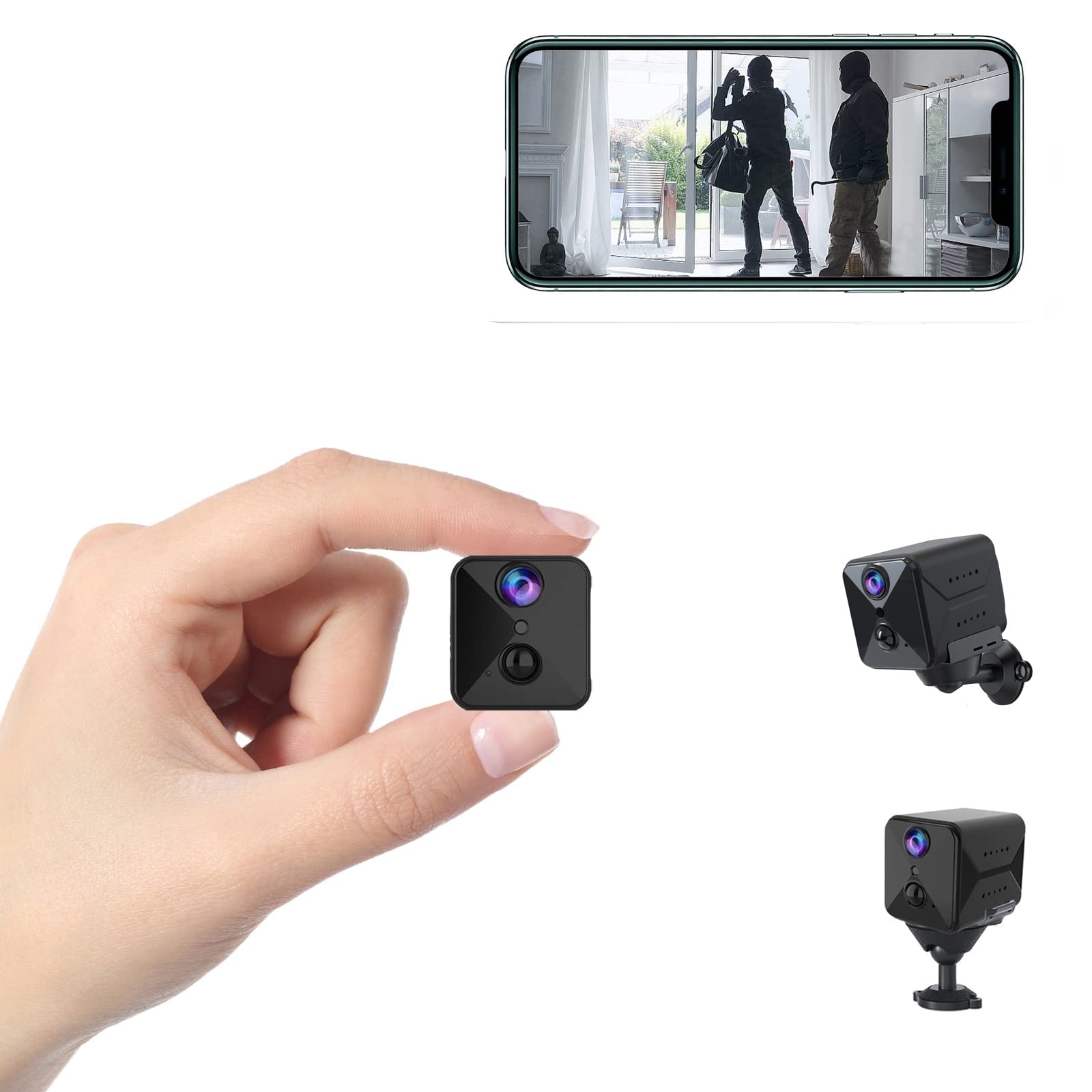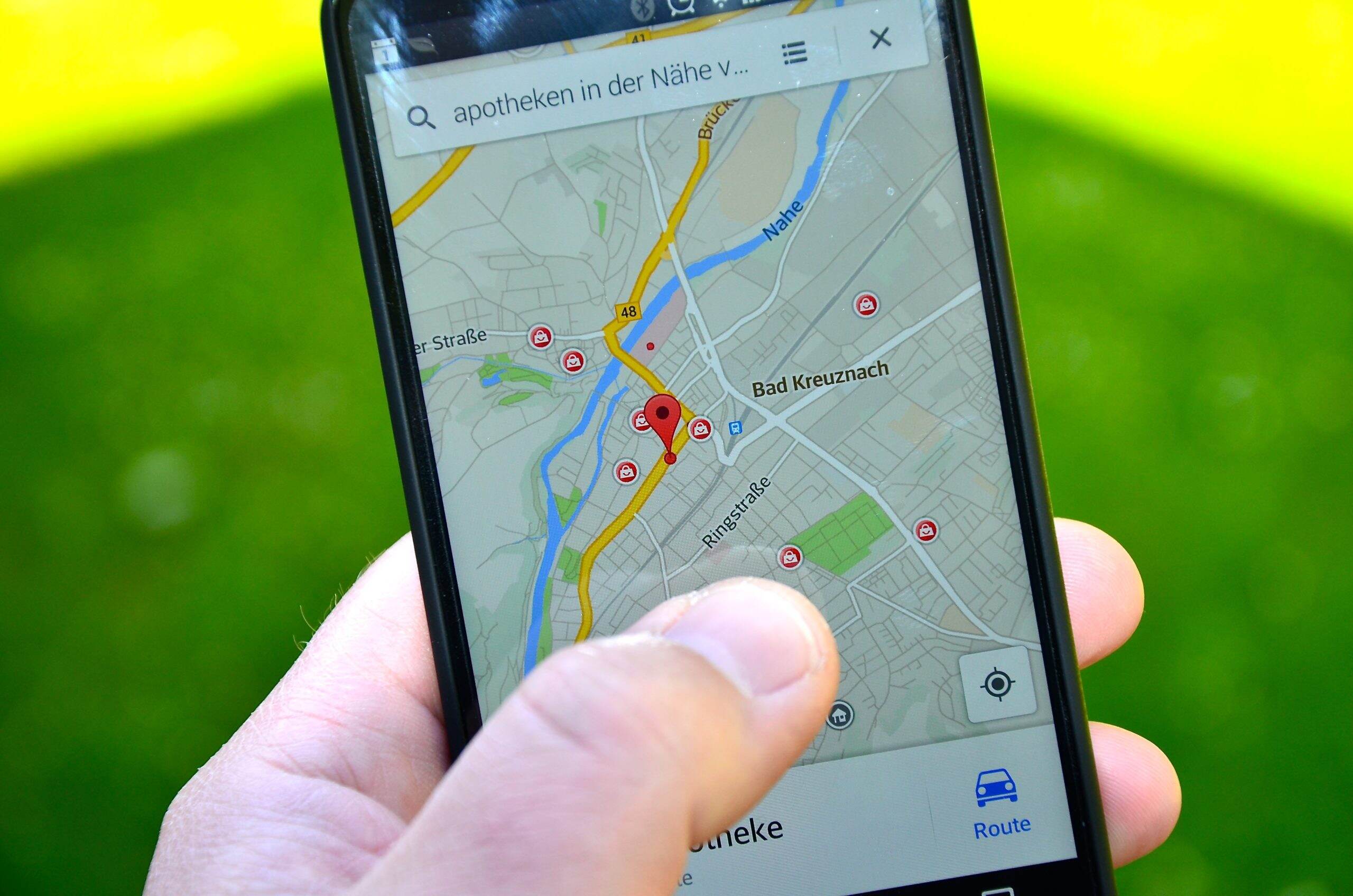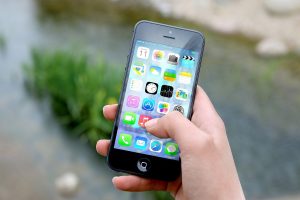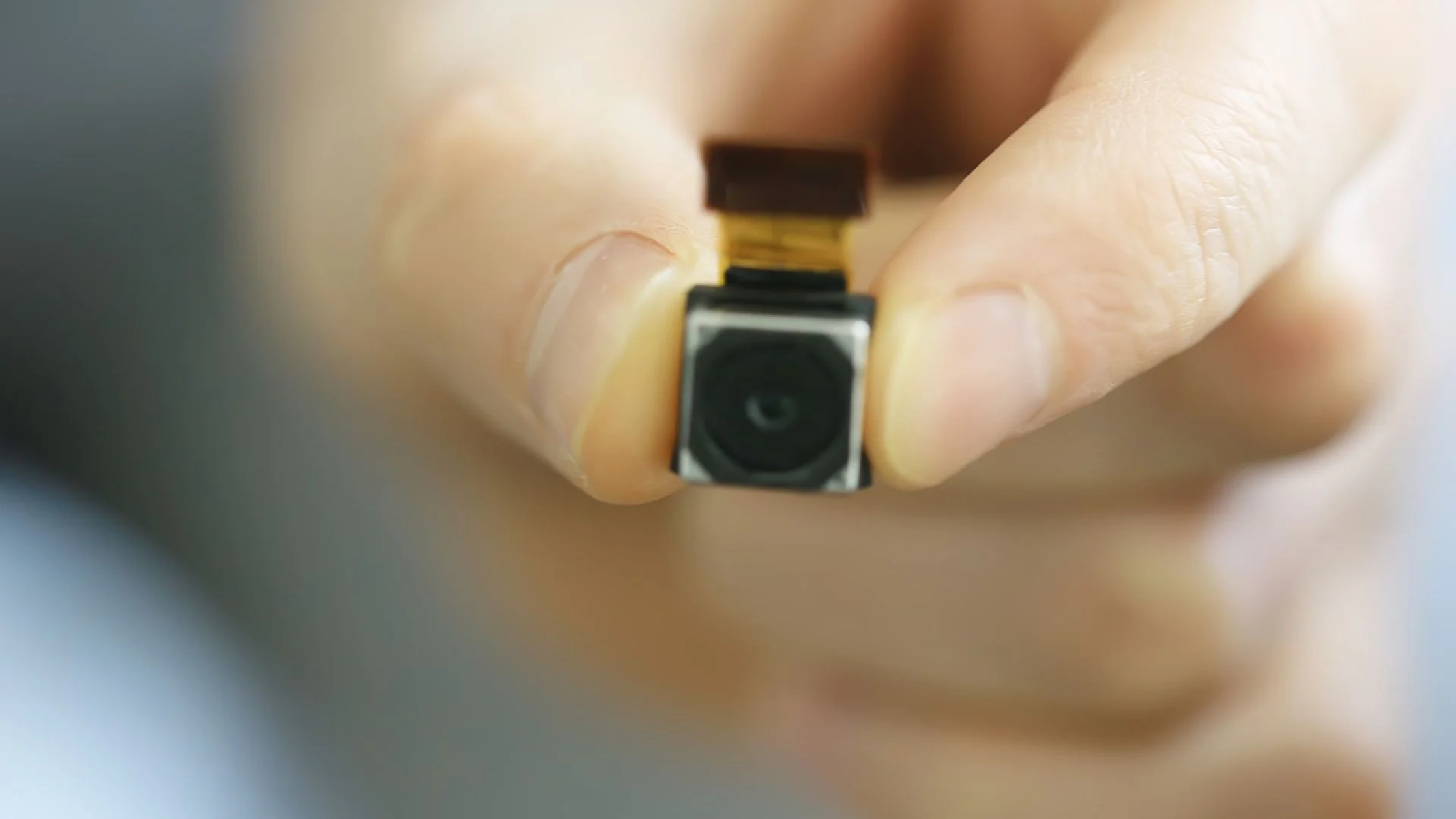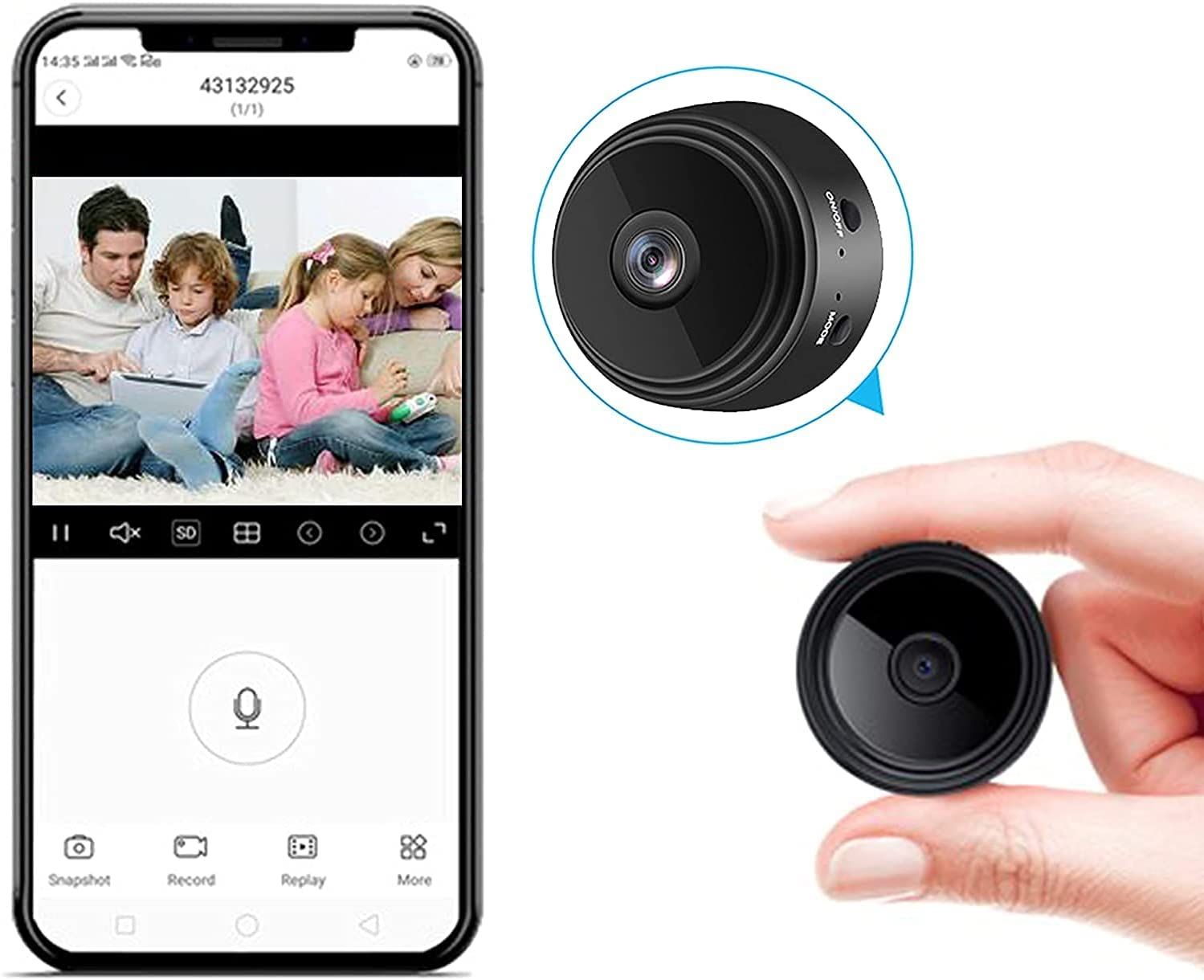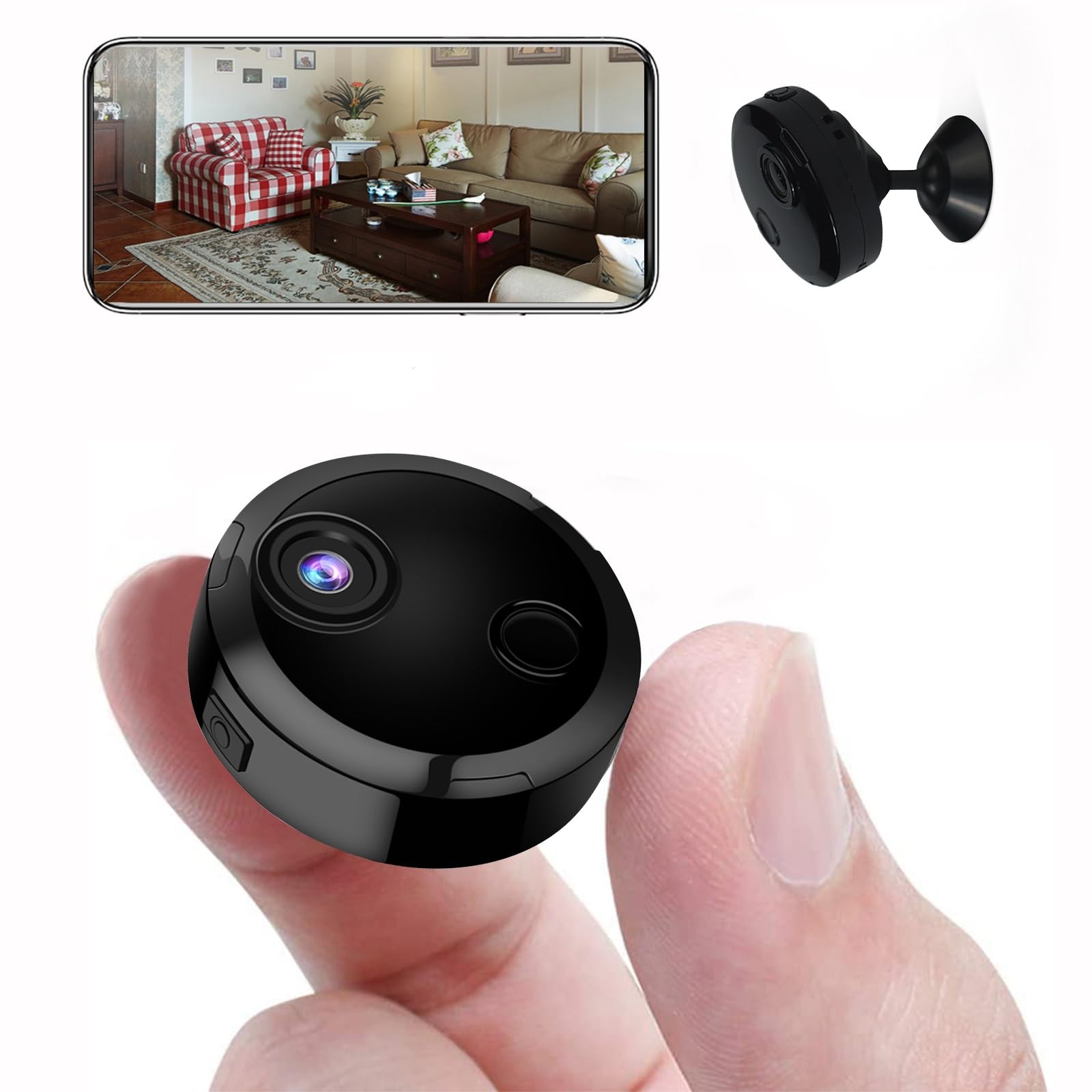Introduction
As technology continues to advance, so do the capabilities of spy apps. With just a few clicks, someone can install a hidden spy app on your iPhone, allowing them to monitor your every move without your knowledge. Whether it’s a suspicious partner, a jealous colleague, or an overprotective parent, the invasion of privacy that comes with these apps is a cause for concern.
So, why should you be concerned about hidden spy apps on your iPhone? The answer is simple – they compromise your privacy and can lead to serious consequences. From stealing personal information to recording private conversations, these spy apps can invade your digital life in alarming ways.
The good news is that there are ways to detect and remove hidden spy apps from your iPhone. In this article, we will walk you through the signs that may indicate the presence of a hidden spy app and provide you with a step-by-step guide on how to find and remove them.
It’s important to note that if you suspect someone has installed a spy app on your iPhone without your consent, it’s always best to involve law enforcement or seek professional advice. This article is intended to provide general information, but it’s not a substitute for legal or professional assistance.
Now, let’s dive into the signs that may indicate the presence of hidden spy apps on your iPhone and the steps you can take to protect your privacy.
Why You Should Be Concerned About Spy Apps
The proliferation of spy apps poses a serious threat to your privacy and personal security. Let’s explore a few reasons why you should be concerned about their presence on your iPhone.
1. Invasion of Privacy: Spy apps grant unauthorized access to your private conversations, text messages, emails, and call logs. This violation of privacy can have far-reaching consequences, leading to blackmail, identity theft, or reputation damage.
2. Personal Safety: Some spy apps have the ability to remotely activate your iPhone’s camera and microphone, allowing an intruder to not only watch and listen to your surroundings but also capture sensitive information without your knowledge. This poses a significant risk to your personal safety.
3. Stealing Sensitive Information: Hidden spy apps can extract personal and financial information from your iPhone, including banking details, credit card numbers, and passwords. This information can be used for fraudulent activities or sold on the dark web, leading to financial loss.
4. Stalking and Harassment: Spy apps enable the stalker to track your location in real-time, monitor your social media activities, and gain insights into your daily routines. This can escalate into physical stalking or online harassment, causing immense psychological distress.
5. Breach of Confidentiality: For those in sensitive professions or industries, the presence of spy apps on their iPhones can compromise confidential business information, trade secrets, client data, or classified documents. This can result in severe legal and financial repercussions.
6. Trust and Relationship Issues: Discovering a hidden spy app on your iPhone can shatter trust in personal and professional relationships. It can lead to doubts, accusations, and conflicts that are difficult to overcome, straining the very foundations of trust.
7. Legal Implications: In many jurisdictions, installing hidden spy apps without consent is illegal. If you believe someone has violated your privacy by installing a spy app on your iPhone, it’s important to consult legal professionals to understand your rights and seek appropriate recourse.
Considering these reasons, it becomes evident why hidden spy apps on your iPhone should be a cause for concern. In the following sections, we will guide you through the process of identifying and removing these invasive applications to secure your privacy and protect your personal information.
Signs of Hidden Spy Apps
Identifying the presence of hidden spy apps on your iPhone can be challenging, as they are designed to operate stealthily in the background. However, there are several signs you can look out for that may indicate their presence. It’s important to note that these signs alone may not be conclusive evidence of a spy app, but they should be taken seriously and warrant further investigation.
1. Unusual Battery Drain: If you notice a sudden and significant decrease in battery life, even when your iPhone is not in use, this could be a sign of a hidden spy app. Spy apps often run in the background and consume a considerable amount of battery power.
2. Increased Data Usage: Spy apps require an internet connection to send captured data to the person monitoring your device. If you observe a sudden surge in your data usage, particularly when you’re not actively using your phone, it could be a red flag.
3. Strange Phone Behavior: Pay attention to any unusual behavior exhibited by your iPhone, such as random shutdowns, freeze-ups, or inexplicable restarts. Spy apps can interfere with the normal functioning of your device.
4. Unfamiliar Apps: Take a close look at the apps installed on your iPhone. If you come across unfamiliar or suspicious-looking apps that you don’t remember downloading, it could be an indication of a hidden spy app. Some spy apps disguise themselves as harmless utilities, such as calculators or weather apps.
5. Slow Performance: If your iPhone suddenly starts lagging, taking longer to open apps or perform basic tasks, it might be a sign that a spy app is running in the background, hogging system resources.
6. Strange Text Messages or Call Logs: Spy apps may leave behind unusual text messages or call logs. If you notice texts or calls from unknown numbers, or if your outgoing messages are not in your sent folder, it could mean that someone is monitoring your communications.
7. Overheating: Excessive heat generated by your iPhone, even during normal use, can indicate the presence of a spy app. Spyware running in the background can cause your device to overwork and overheat.
If you notice any combination of these signs, it’s essential to investigate further to determine if a hidden spy app is present on your iPhone. In the next section, we will guide you through a step-by-step process to identify and remove these intrusive applications.
Step-by-Step Guide to Finding Hidden Spy Apps on iPhone
If you suspect the presence of hidden spy apps on your iPhone, it’s crucial to take proactive steps to identify and remove them. Follow this step-by-step guide to safeguard your privacy and protect your personal information:
Step 1: Update Your iPhone: Make sure your iPhone is running the latest version of iOS. Software updates often include security patches that can help detect and remove spy apps.
Step 2: Check for Unfamiliar or Suspicious Apps: Review all the apps installed on your iPhone. Delete any apps that you do not recognize or do not remember downloading. Pay close attention to apps with generic names or those that you never use.
Step 3: Analyze Battery Usage: Open the “Settings” app on your iPhone, go to “Battery,” and check the battery usage of each app. If you notice an app consuming an unusually high amount of battery power, it could be a spy app.
Step 4: Examine Data Usage: Similarly, navigate to the “Settings” app, go to “Cellular,” and review the data usage for each app. If an app shows unexpectedly high data usage, especially when you’re not actively using it, it may be transmitting data to a remote server.
Step 5: Monitor iPhone Storage: Go to the “Settings” app, tap on “General,” and select “iPhone Storage.” Look for any unfamiliar apps or suspiciously large amounts of storage used by certain apps. Spy apps may take up significant storage space.
Step 6: Look for Unknown Processes: On your iPhone, go to “Settings,” select “General,” and tap on “Background App Refresh.” Scroll through the list of apps and identify any unfamiliar or suspicious processes running in the background.
Step 7: Scan for Jailbreaking: If your iPhone has been jailbroken (a process that removes software restrictions), it becomes more vulnerable to spy apps. Look for any signs of jailbreaking, such as unusual apps, icons, or system behavior.
Step 8: Use Spyware Detection Apps: Several reputable apps are available that can help detect and remove spyware from your iPhone. Download and install a trusted spyware detection app from the App Store, and run a scan of your device.
Step 9: Reset Your iPhone: If all else fails, and you have followed the steps above without success, consider resetting your iPhone to its factory settings. This will erase all data and installed apps, including any hidden spy apps.
Remember, the presence of hidden spy apps on your iPhone can compromise your privacy and put your personal information at risk. If you suspect someone has installed a spy app on your device without your consent, it’s important to take immediate action to protect yourself.
Continued vigilance and regular device maintenance will help ensure your iPhone remains free from hidden spy apps. In the next section, we will provide some additional tips to help safeguard your privacy in the digital age.
Method 1: Checking for Unfamiliar or Suspicious Apps
One of the first steps in detecting hidden spy apps on your iPhone is to closely examine the apps installed on your device. Keep an eye out for any unfamiliar or suspicious-looking apps that you don’t recognize or remember downloading. Here’s how you can go about it:
Step 1: On your iPhone, go to the home screen and look for the “App Store” icon. Tap on it to open the App Store.
Step 2: Once inside the App Store, tap on the “Updates” tab located at the bottom right corner of the screen.
Step 3: Scroll through the list of available updates. Pay attention to any apps that you do not recognize or do not remember downloading. These unfamiliar apps could potentially be hidden spy apps.
Step 4: To get more information about a specific app, tap on its name. This will take you to the app’s detailed page, where you can view its description, screenshots, and user reviews.
Step 5: Read the app’s description carefully. Look for any indications that the app might be suspicious or have hidden functionalities. Be cautious of apps with overly generic names or those that promise unrealistically advanced features.
Step 6: Check the user reviews and ratings of the app. Low ratings, negative reviews, or a lack of reviews altogether could be red flags indicating that the app is potentially harmful or deceptive.
Step 7: If you still have doubts about an app’s authenticity, try searching for it online. Look for news articles or user experiences that might provide insights into the app’s reputation and whether it has been associated with any spyware or malicious activities.
Step 8: If, after careful consideration, you believe that an app is suspicious or may be a hidden spy app, it’s best to err on the side of caution and uninstall it from your iPhone.
Remember, while checking for unfamiliar or suspicious apps can help in identifying hidden spy apps, it is not a foolproof method. Some spy apps disguise themselves as harmless utilities or even mimic legitimate apps. Therefore, it’s important to remain vigilant and consider using multiple detection methods.
In the following sections, we will explore additional methods to check for and remove hidden spy apps on your iPhone to ensure your privacy and security.
Method 2: Analyzing Battery Usage
Monitoring the battery usage on your iPhone can provide valuable insights into the presence of hidden spy apps. Spy apps often run in the background and consume significant battery power, which can be a telltale sign of their presence. Here’s how you can analyze your iPhone’s battery usage:
Step 1: On your iPhone, open the “Settings” app from the home screen.
Step 2: Scroll down and tap on “Battery.” This will give you access to detailed information about your iPhone’s battery usage.
Step 3: In the “Battery” section, you’ll see a list of apps along with the percentage of battery power each app has consumed over the last 24 hours or the last 7 days.
Step 4: Examine the list of apps and look for any applications that are consuming an unusually high amount of battery power, especially if you haven’t been using them actively.
Step 5: Pay close attention to apps that you don’t recognize or don’t remember using recently. These apps could potentially be spy apps running in the background to collect and transmit data.
Step 6: While it’s normal for certain apps like social media or streaming services to consume higher battery power, be wary if you notice a significant discrepancy between the battery usage of an app and your actual usage of the app.
Step 7: If you identify an app that seems suspicious or has a disproportionately high battery usage, it’s advisable to further investigate its legitimacy. Consider researching the app, reading user reviews, or consulting with experts to determine if it might be a hidden spy app.
Step 8: If all signs point to a hidden spy app, it is recommended to remove it from your iPhone. To do this, press and hold the app icon on your home screen until it starts wiggling, then tap the “X” button to delete it.
Remember, analyzing battery usage alone may not provide definitive proof of a hidden spy app’s presence. Some legitimate apps can also consume high battery power due to their functionalities. Therefore, it’s essential to combine battery usage analysis with other detection methods.
In the next section, we will explore another method to detect hidden spy apps on your iPhone by examining data usage.
Method 3: Examining Data Usage
Monitoring data usage on your iPhone can help uncover hidden spy apps that may be surreptitiously transmitting data in the background. Spy apps rely on an internet connection to send the captured information to the person monitoring your device. By analyzing your iPhone’s data usage, you can identify any suspiciously high data consumption that could indicate the presence of a hidden spy app. Here’s how you can examine your data usage:
Step 1: Open the “Settings” app on your iPhone from the home screen.
Step 2: Scroll down and tap on “Cellular.” On some iPhone models, this option may be labeled “Mobile Data.”
Step 3: In the “Cellular” section, you’ll see a list of apps along with the amount of data each app has consumed over a specific period, usually indicated as “Current Period” or “Last 30 Days.”
Step 4: Review the list of apps and look for any that have unexpectedly high data usage, especially if you haven’t been actively using them.
Step 5: Pay close attention to apps that you don’t recognize or haven’t used recently. These apps could be potential hidden spy apps that are secretly transmitting data to external servers.
Step 6: While certain apps like video streaming or cloud storage services may consume large amounts of data, be cautious if you notice an app using significantly more data than expected based on your usage patterns.
Step 7: If you identify an app with suspiciously high data usage, it’s important to investigate further to determine its legitimacy. Look up the app online, read user reviews, or seek expert advice to ascertain if it might be a hidden spy app.
Step 8: If there are strong indications that the app might be a hidden spy app, it is recommended to remove it from your iPhone. Press and hold the app icon on your home screen until it starts wiggling, then tap the “X” button to delete it.
Remember, while analyzing data usage can be helpful in uncovering hidden spy apps, it should be used in conjunction with other detection methods for a more comprehensive approach. Constant vigilance and a combination of detection techniques will help ensure the safety and privacy of your iPhone.
In the next section, we will explore another technique to detect hidden spy apps on your iPhone by monitoring storage usage.
Method 4: Monitoring iPhone Storage
Examining the storage usage on your iPhone can provide valuable insights into the presence of hidden spy apps. Spy apps often require storage space to store captured data or operate covertly. By monitoring your iPhone’s storage usage, you can identify any apps or files that consume an unusually large amount of space, potentially indicating the presence of a hidden spy app. Here’s how you can monitor your iPhone’s storage:
Step 1: Open the “Settings” app on your iPhone from the home screen.
Step 2: Scroll down and tap on “General.”
Step 3: In the “General” section, select “iPhone Storage.” On older iPhone models, this option may be labeled “Storage & iCloud Usage.”
Step 4: Under the “Storage” section, you’ll see a breakdown of the storage usage on your iPhone, categorized by different apps and files.
Step 5: Review the list of apps and files, paying attention to any that are taking up an unusually large amount of storage space.
Step 6: Look for apps that you don’t recognize or haven’t used recently. These unfamiliar apps could potentially be hidden spy apps using storage space to store captured data or perform stealth operations.
Step 7: Besides checking the app storage, also examine other categories such as “Photos & Camera” and “Messages” to ensure there are no suspiciously large amounts of data stored in these areas.
Step 8: If you come across an app or file that appears suspicious or has a disproportionately high storage usage, it’s important to further investigate its legitimacy. Conduct online research, read user reviews, or consult with experts to determine if it might be a hidden spy app.
Step 9: If you have strong reasons to believe that an app is a hidden spy app, it is recommended to uninstall it from your iPhone. To do this, press and hold the app icon on your home screen until it starts wiggling, then tap the “X” button to delete it.
Remember, while monitoring storage usage can help in detecting hidden spy apps, it should be combined with other detection methods for a comprehensive approach. By staying vigilant and employing multiple techniques, you can ensure the security and privacy of your iPhone.
In the next section, we will explore another method to detect hidden spy apps on your iPhone by looking for unknown processes running in the background.
Method 5: Looking for Unknown Processes
An effective method to detect hidden spy apps on your iPhone is to examine the processes running in the background. Hidden spy apps often disguise themselves as legitimate processes to avoid suspicion. By looking for unknown or suspicious processes, you can identify any potential hidden spy apps. Here’s how you can check for unknown processes on your iPhone:
Step 1: Open the “Settings” app on your iPhone from the home screen.
Step 2: Scroll down and tap on “General.”
Step 3: In the “General” section, select “Background App Refresh.”
Step 4: On the “Background App Refresh” screen, you’ll see a list of apps that are allowed to refresh their content in the background.
Step 5: Scroll through the list and look for any unfamiliar or suspicious-looking apps. Pay attention to apps that you do not recognize or don’t remember granting background app refresh permissions.
Step 6: If you come across an unfamiliar app or process, research its name online to determine its legitimacy. Check if it is a known hidden spy app or if other users have reported any suspicious activities associated with it.
Step 7: Additionally, you can cross-verify the process with the list of installed apps on your iPhone. If you don’t find the app corresponding to the unknown process in your list of installed apps, it could be a sign of a hidden spy app.
Step 8: If you suspect an app or process to be a hidden spy app, it is recommended to remove it from your iPhone. Press and hold the app icon on your home screen until it starts wiggling, then tap the “X” button to delete it.
It’s important to note that not all unknown or suspicious processes are necessarily spy apps. Some processes may belong to system services or legitimate apps that you may not be familiar with. Therefore, it’s essential to exercise caution and conduct thorough research before taking any action.
By actively monitoring unknown processes, you can increase the chances of identifying hidden spy apps on your iPhone. In the next section, we will explore another technique to detect spy apps by checking for signs of device jailbreaking.
Method 6: Scanning for Jailbreaking
One method to detect hidden spy apps on your iPhone is by checking for signs of jailbreaking. Jailbreaking is a process that removes certain software restrictions imposed by Apple on iOS devices, allowing users to install unauthorized apps and make system-level modifications. Spy apps often target jailbroken iPhones as they offer more control and access. Here’s how you can scan your iPhone for signs of jailbreaking:
Step 1: Look for unfamiliar or unauthorized apps and icons on your iPhone’s home screen. Spy apps sometimes install custom icons or apps that are not available on the App Store.
Step 2: Check if you have access to the App Store. If you are unable to download or update apps from the App Store, it could be an indication that your device has been jailbroken.
Step 3: Examine your iPhone’s settings for any unauthorized modifications. Go to the “Settings” app, and look for options or menus that are not normally present on a non-jailbroken iPhone.
Step 4: Check if you have access to the Cydia app. Cydia is an alternative app store for jailbroken devices that allows users to download and install unauthorized apps and tweaks.
Step 5: Look for any unusual system behavior, such as frequent crashes, freezes, or overall instability. Jailbroken devices may experience these issues due to the modifications made to the underlying system.
Step 6: If you suspect your iPhone has been jailbroken, it’s recommended to restore your device to its factory settings through iTunes or Finder. This will erase all data and installed apps, including any hidden spy apps.
It’s important to note that scanning for jailbreaking alone may not confirm the presence of hidden spy apps on your iPhone. Some spy apps can operate on non-jailbroken devices as well. Therefore, it’s crucial to combine jailbreak detection with other detection methods to ensure the security of your device.
By regularly checking for signs of jailbreaking, you can proactively protect your iPhone against hidden spy apps. In the next section, we will explore another method to detect hidden spy apps on your iPhone by using spyware detection apps.
Method 7: Using Spyware Detection Apps
Another effective method to detect and remove hidden spy apps on your iPhone is by using specialized spyware detection apps. These apps are specifically designed to scan your device for known spyware and provide you with an extra layer of protection. Here’s how you can use spyware detection apps to safeguard your iPhone:
Step 1: Visit the App Store on your iPhone and search for reputable spyware detection apps. Look for apps that have positive user ratings and reviews.
Step 2: Download and install the spyware detection app of your choice onto your iPhone.
Step 3: Open the spyware detection app and follow the instructions to set it up. This may involve granting necessary permissions and allowing the app to access various features of your device.
Step 4: Once the app is set up, initiate a scan of your iPhone for hidden spy apps or known spyware. This process may take a few minutes, depending on the size of your device’s storage.
Step 5: After the scan is complete, carefully review the scan results provided by the spyware detection app. Pay attention to any potential spyware or suspicious apps that are flagged.
Step 6: If the detection app identifies any hidden spy apps or known spyware, follow the recommended steps provided by the app to remove them from your device.
Step 7: For added security, consider running regular scans using the spyware detection app to ensure your iPhone remains free from hidden spy apps.
Using spyware detection apps can provide an extra layer of defense against hidden spy apps on your iPhone. However, it’s important to note that no detection app can guarantee a 100% success rate, as new spyware variants are constantly emerging. Therefore, it’s recommended to combine spyware detection apps with other detection methods and maintain an overall vigilant approach to protect your privacy and security.
In the next section, we will conclude our guide and provide some final tips to enhance your iPhone’s security and minimize the risk of hidden spy apps.
Conclusion
Protecting your iPhone from hidden spy apps is crucial for safeguarding your privacy and personal information. By being aware of the signs and employing various detection methods, you can take proactive steps to identify and remove these invasive applications. Here are some key takeaways to keep in mind:
1. Stay Vigilant: Keep a watchful eye on your iPhone for any unusual signs or suspicious behaviors that may indicate the presence of hidden spy apps.
2. Check for Unfamiliar Apps: Regularly review your installed apps and remove any that you don’t recognize or remember downloading.
3. Analyze Battery and Data Usage: Pay attention to any significant battery drain or abnormal data usage, as these can be signs of hidden spy apps.
4. Monitor iPhone Storage: Examine your iPhone’s storage usage and delete any apps or files that consume an unusually large amount of space.
5. Look for Unknown Processes: Check for unfamiliar or suspicious processes running in the background, as they may be indicative of hidden spy apps.
6. Scan for Jailbreaking: Keep an eye out for signs of jailbreaking on your iPhone, as spy apps often target jailbroken devices.
7. Use Spyware Detection Apps: Install reputable spyware detection apps from the App Store and regularly scan your iPhone for hidden spy apps.
8. Stay Updated: Keep your iPhone’s software up to date to ensure you have the latest security patches and protections.
9. Seek Professional Help: If you have strong suspicions or concerns about hidden spy apps on your iPhone, it is advisable to consult with professionals, such as legal experts or cybersecurity specialists.
Remember, while these methods and tips can help detect and remove hidden spy apps, it’s essential to remain vigilant and take additional security measures for overall digital safety. Regularly review your iPhone’s settings, restrict app permissions, and exercise caution when downloading apps or sharing personal information.
By following these guidelines and maintaining a proactive approach, you can enhance your iPhone’s security and protect yourself from the invasion of privacy that hidden spy apps can bring.







